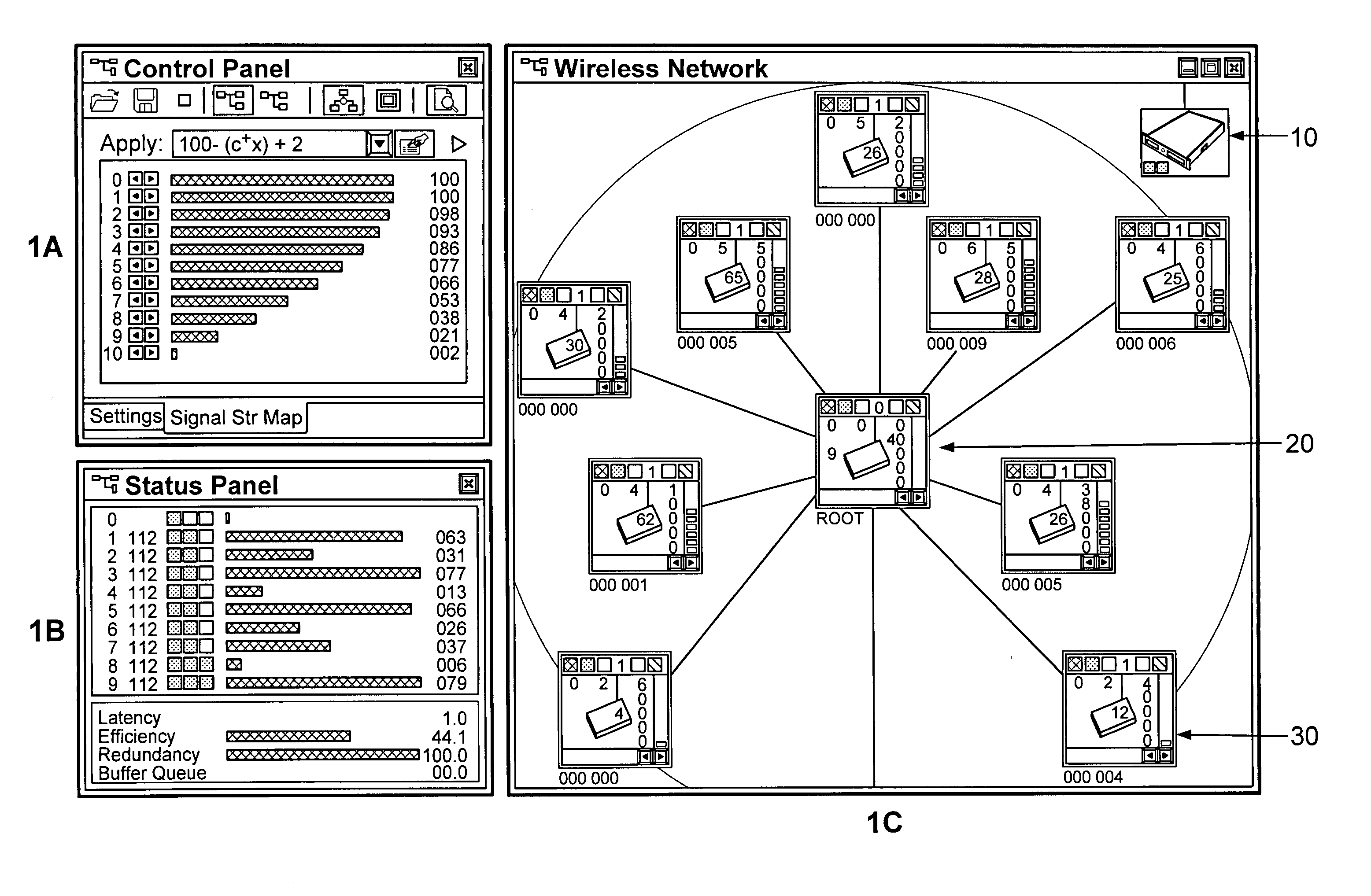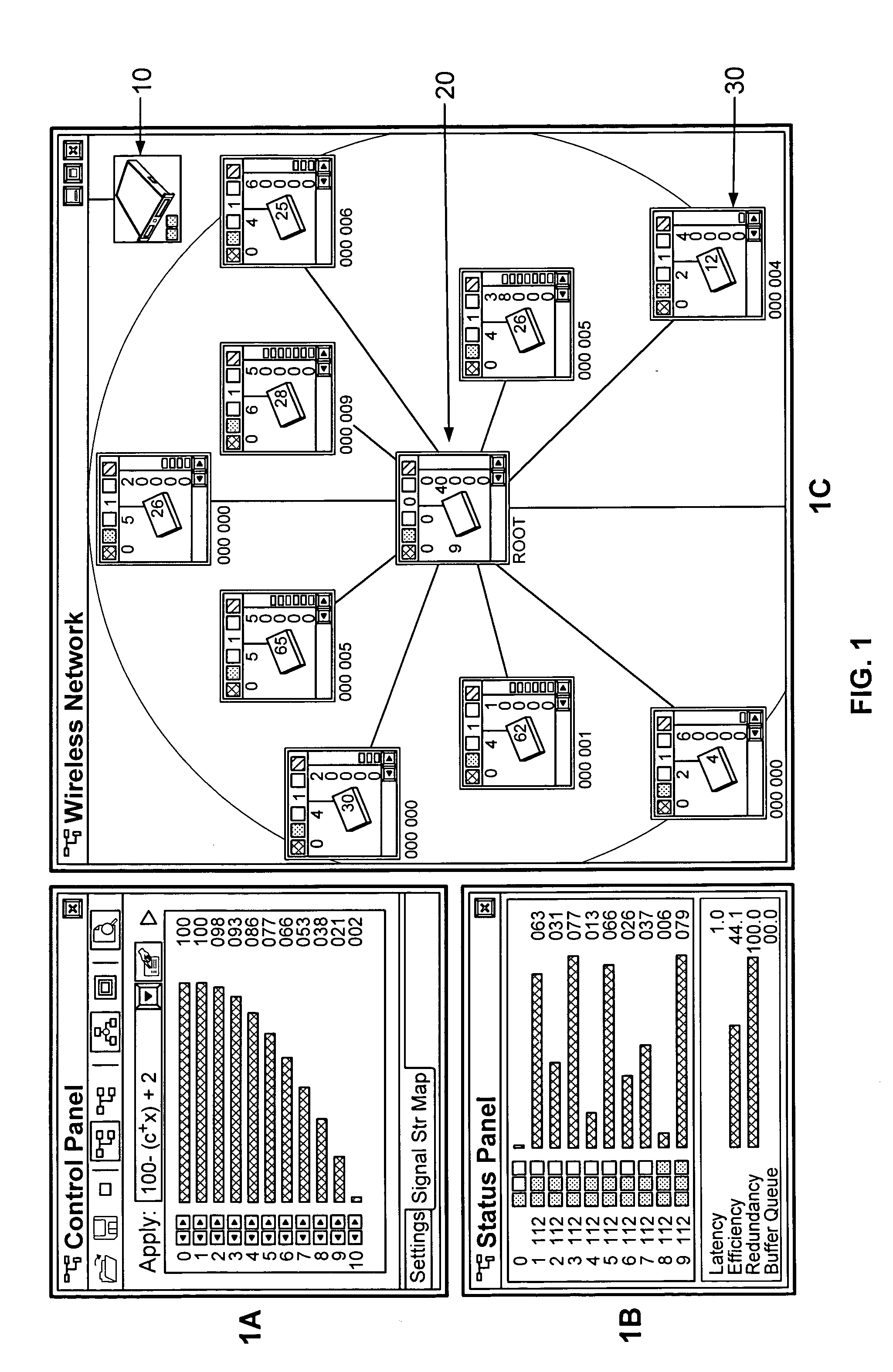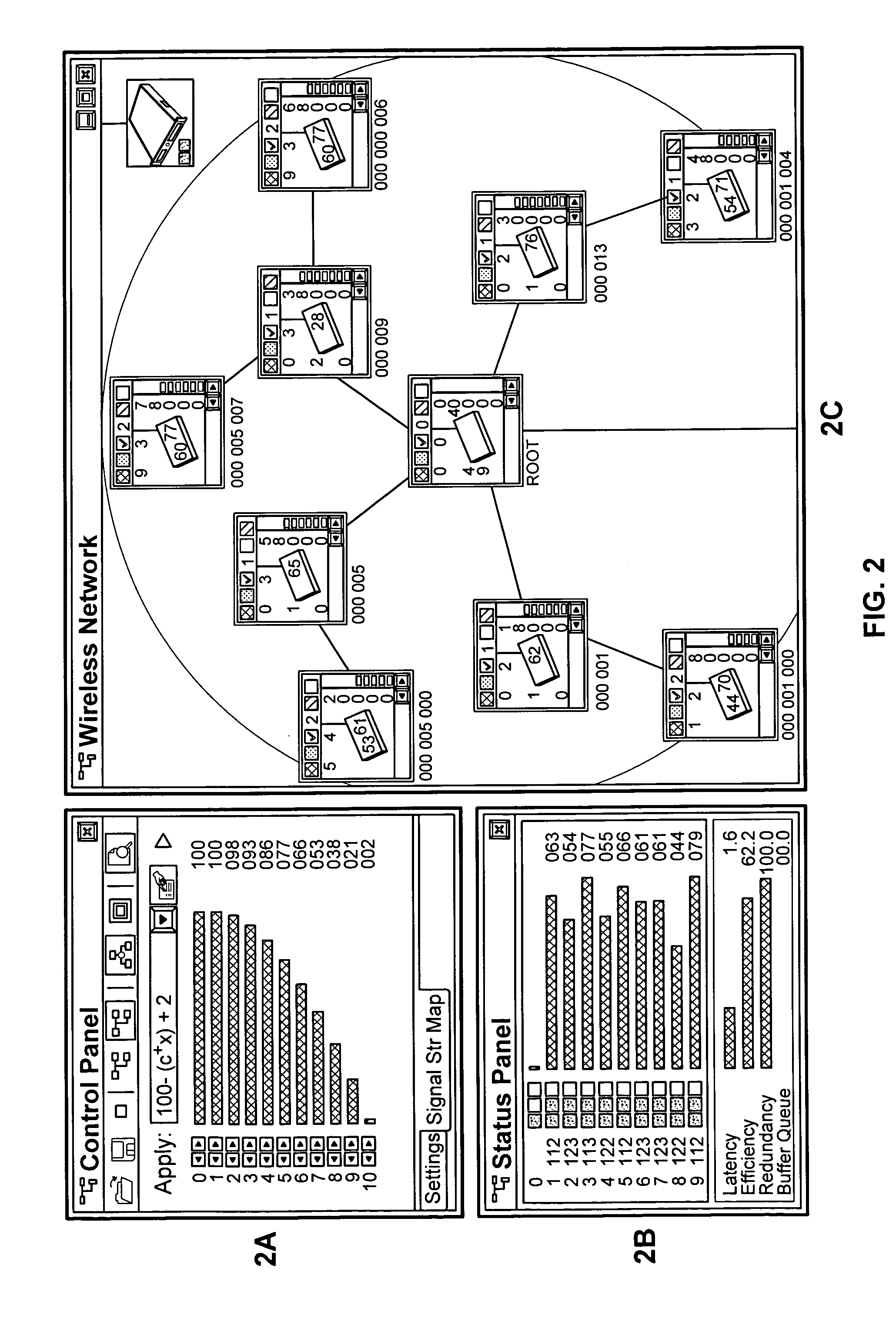High performance wireless networks using distributed control
a wireless network and distributed control technology, applied in the field of adaptive software layer, can solve the problem of poor throughput and poor cost effectiveness, and achieve the effects of low latency, high throughput and cost effective distributed sensing and control of the network
- Summary
- Abstract
- Description
- Claims
- Application Information
AI Technical Summary
Benefits of technology
Problems solved by technology
Method used
Image
Examples
Embodiment Construction
[0050]The description above and below and the drawings of the present document focus on one or more currently preferred embodiments of the present invention and also describe some exemplary optional features and / or alternative embodiments. The description and drawings are for the purpose of illustration and not limitation. Those of ordinary skill in the art would recognize variations, modifications, and alternatives. Such variations, modifications, and alternatives are also within the scope of the present invention. Section titles are terse and are for convenience only.
[0051]The object of this invention is a new type of wireless AP nodes that:[0052]Configure them selves based on considerations, set by the access server for the network.[0053]Support automatic load balancing: AP nodes avoid data congestion hot spots.[0054]Support fail over: if one node dies, nodes connected to it automatically switch to another.[0055]Is fully functional when powered up: no installation procedure or si...
PUM
 Login to View More
Login to View More Abstract
Description
Claims
Application Information
 Login to View More
Login to View More - R&D
- Intellectual Property
- Life Sciences
- Materials
- Tech Scout
- Unparalleled Data Quality
- Higher Quality Content
- 60% Fewer Hallucinations
Browse by: Latest US Patents, China's latest patents, Technical Efficacy Thesaurus, Application Domain, Technology Topic, Popular Technical Reports.
© 2025 PatSnap. All rights reserved.Legal|Privacy policy|Modern Slavery Act Transparency Statement|Sitemap|About US| Contact US: help@patsnap.com



